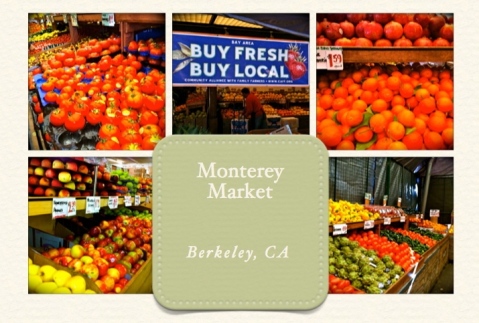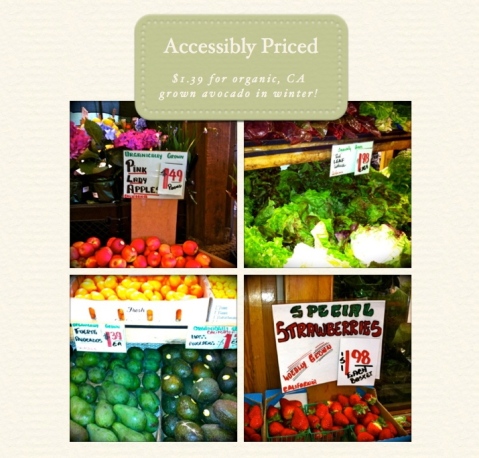1/2 Off Pony Rides! Say What???

Where do you go to decide which ethical business operations to support? Who do you ask for tips and suggestions? How do you decide…?:
- Where to shop for groceries, clothing, and household items?
- Which local farms to support?
- Where to enjoy a meal made from organic, local, grass-fed ingredients?
- Which venues to choose for celebrating milestones, anniversaries, birthdays, and holidays?
Biocadence is focused on increasing the accessibility of sustainable living, by igniting a path toward over-consumption recovery, behavioral sustainability, global sibling interconnectedness, and quality-of-life design. We are always on the look-out for tools that save time, money, and energy by making sustainable choices more readily available.
I recently downloaded the Raved app- where we can connect with our Facebook network and request/review tips on restaurants/shops/grocery (all types of venues). It helps us be selective about which businesses we support, through deliberate design of the consumption we choose to engage in. I’m excited to give my favorite sustainable businesses a shout out on the Raved app!
Sneak peak on Biocadence restaurant tips, coming soon on the Raved app:
- Cafe Gratitude ~ 1730 Shattuck Ave, Berkeley ~ Pic Source
Sink into a couch, sip a wheatgrass cocktail, marvel at a menu dancing with descriptive optimism, and enjoy raw, vegan energy-on-a-plate! You will not want to leave this turbine of positivity, so lengthen your stay with a slice (or two) of my favorite key lime pie, made with creamy avocado and cashew nut crust!
 Corners Tavern ~ 1342 Broadway Plaza, Walnut Creek ~ Pic Source
Corners Tavern ~ 1342 Broadway Plaza, Walnut Creek ~ Pic Source
We love Corners Tavern for its delicious grass-fed burger, internationally-inspired brunch selection, mesmerizing menu of desserts, and captivating decor. Don’t forget to muse over the design of the restaurant, accented by re-purposed antiques and murals using Sumi Ink and Tea-Stain on paper!
What are your favorite spots? Share with me here, on the Biocadence Facebook page, and support your favorite sustainable businesses by sharing your tips on the Raved app!
Squeeze hugs from Annie at Biocadence.
**Featured image sourced from Raved Facebook page
Quicklinks to Most Popular Biocadence Posts:
- “The Hunger Games”… Fiction or Non-Fiction?
- What is Ethical Eating?… Is Eating Meat Ethical?
- Use Biodegrable Trash Bags!
- Embracing the Fulcrum: Reconciling My Belief in the Law of Attraction With My Sustainable Living Transition
Related Articles:
- Raved Recommendation App Makes it Easier to Tap Into Your Social Graph
- New Raved App Launches in Chicago
- Raved Delivers Friend-Powered Recommendation App for Android Users to Explore the World Around Them
Eliminating Waste Via Pesto Cream Sauce

Cooking from recipes lowers our margin for error, usually ensuring a delicious outcome. On the other hand, it often requires a grocery run. Eliminate waste, saving gas, money, and time, by working from a baseline recipe and swapping-in ingredients you already have in the kitchen. Added bonus: Although I don’t show this in the example below, note that ingredient swapping can also help us eliminate use of out-of-season ingredients.
Last week, I decided that I needed a healthy vegetable and chicken lunch. To add a flavorful topping, I made an indulgent Pesto Cream Sauce. Of the 7 ingredients in the Gorgonzola Cream Sauce baseline recipe I used, I only had 3:
- Pinch of salt
- 1 TBS butter
- 4 cloves garlic
I swapped the remaining 4 ingredients, and embellished the sauce with additional ingredients that were fresh and ready to be used!
Ingredients I swapped:
- 1 TBS Butter => Grassfed Butter (Of course!)
- 1 TBS All Purpose Flour => Coconut Flour (I don’t use AP flour, for health purposes)
- 1.25 Cups Low fat milk => .5 Cup Half & Half, .75 Cups Water
- 1/4 Cups Cream Cheese => 1/4 Cup Goat Cheese
- 1/2 Cup Gorgonzola Cheese => I used the 2TBS I had left, and added a little more goat cheese and another pinch of salt
Embellishments – Eliminate Waste by adding ingredients you already have, that need to be used:
- Chopped tomato – The evening before, we’d had tacos; a tupperware of left-over tomato was beckoning.
- Basil – A carton of basil, ready and fresh… how could I resist throwing this bundle in the food processor and morphing my creation into a pesto cream sauce??? #JustDoIt!
I saved:
- .10 gallons of gas
- An estimated $12 on groceries
- At least 45 minutes for the shopping trip
- Waste – Remaining AP flour, milk, and cream cheese would have likely gone unused
DARE I SAY THE OUTCOME WAS TASTIER? I DARE! Easy, given my love for pesto and tomato.
The process:
Add butter, crushed garlic, & flour at medium heat. Brown for 2-3 mins.
Slowly stir in half & half and water.
Add cheeses and basil. Stir until it mix melts and thickens.
Add tomato and pinch of salt to taste. Stir and lower heat, until you have desired consistency!
Sprinkle onto healthy meal for flavor. Delicious!
Save leftovers!
What other baseline recipes allow for easy ingredient swapping? Please share your creations with us! Thanks for reading. Squeeze hugs from Annie at Biocadence.
Can We Find Accessibly Priced Real-Food?

I’ve often heard the witty complaint: “It’s not Whole Foods; it’s Whole Paycheck”. I’ve indulged in the Whole Foods experience enough to know that this can be the case. The Chow blog shares the results of their investigative shopping experiment:
“Our run for “regular” groceries at the local Safeway came to $136.31, typical for a week’s worth of our groceries (and some leftovers). The total for the organic groceries was $199.78, about $65 more. And remember, organic food comes in smaller packages. Using these rough numbers, eating purely organic would cost us about $260 more per month.” (Source)
$260 more per month would certainly be cost prohibitive for many! However, this conjecture balances upon a modern foundation — one that may prove to be rickety: we should spend less than 10% of our overall income on food.
“Consider that in 1932, spending on food at home took almost 22% of disposable income, compared to the record low of only 5.6% in 2008.” (Source)
PRIORITY-SHIFT ALERT!!!
Might it be that we can afford relatively “expensive” real-food if we prioritize nutrition over entertainment and ease? Has our culture decided that accessibility to technology, cell phones, cable television, video games (dare I add cigarettes and alcohol, for many) are more important than real-food? Might this upside-down priority pyramid be reinforced by the addictive quality of inexpensive processed foods made from seemingly infinite variations of (for the most part) two government-subsidized ingredients: corn and petroleum?
Purchasing real-food can feel like a squeeze. In response to this, we must recognize that nutrition and health are list-toppers, bar none! As I wrote in In Response to Coca-Cola Anti-Obesity Campaign,
“The pharmaceutical consequences of consuming GMOs, as well as other substances disguised as food (i.e. high fructose corn syrup) may result in prohibitive healthcare costs for the very same families who feel threatened by rising food costs!”
Despite its reputation for being prohibitively expensive, real-food is not always as expensive as the nay-sayers would have us believe. While I pray that our culture rediscovers the importance of real-food to the extent that we are willing to pay for it, there are few barriers to uncovering inexpensive real-food!
Join me in my tour of Berkeley, California’s Monterey Market.
Oh my goodness, there is produce everywhere… literally. Think you can’t get organic, California grown avocados and berries in the winter? Think again!
Behind me in the check-out line is a lady with a full cart of produce. She shares: “I come all the way from Hercules to get my groceries here. It’s so much more fresh than anything in my local markets.”
Why do I feel more healthy and eco-friendly, just by being in the market?
- The two-foot tall mounds of swiss chard, perhaps?
- The largest bulk-food selection I have ever laid eyes on?
- The absence of turbo-sanitized, lemme eat some pesticides, bleached-just-this-morning supermarket luster?
- Maybe it’s the sensation that fellow shoppers are my people: hard-working, urban-homestead-bound foodies of all shapes, ages and income levels?
As I come down from my real-food high, it is appropriate to make a sobering statement: for those without income, real-food is indeed cost-prohibitive. And yet, real-food resources abound. Too name a few:
- Homefullness is an organization focused on providing resources to homeless individuals,
“Located on the grounds of the Gateway Shelter for Men, Homefull’s Micro Farm boasts over 160 raised beds, growing fresh produce.” (Source)
- Endlessly Organic is an organization that offers organic produce to families who may not otherwise have produce in the kitchen.
- Earthbound Farm Organic donates organic produce to local schools and hospitals. (Source)
- Organic Valley offers grants, cash, and food donations. (Source)
Ultimately, I’m making three statements in response to three questions today:
- Can we find accessibly priced real-food? YES!
- Should we re-prioritize such that a larger percentage of our budget is available for real-food? YES!
- As our culture re-discovers the vitality of real-food, is there market space for creative innovation in the real-food movement? HECK YES!!!
Thank you for reading, beautiful people! I appreciate your support and feedback. Consider following the Biocadence blog by entering your email address and clicking “subscribe”, in the upper right of the Biocadence homepage. Squeeze hugs!
Related Articles:









